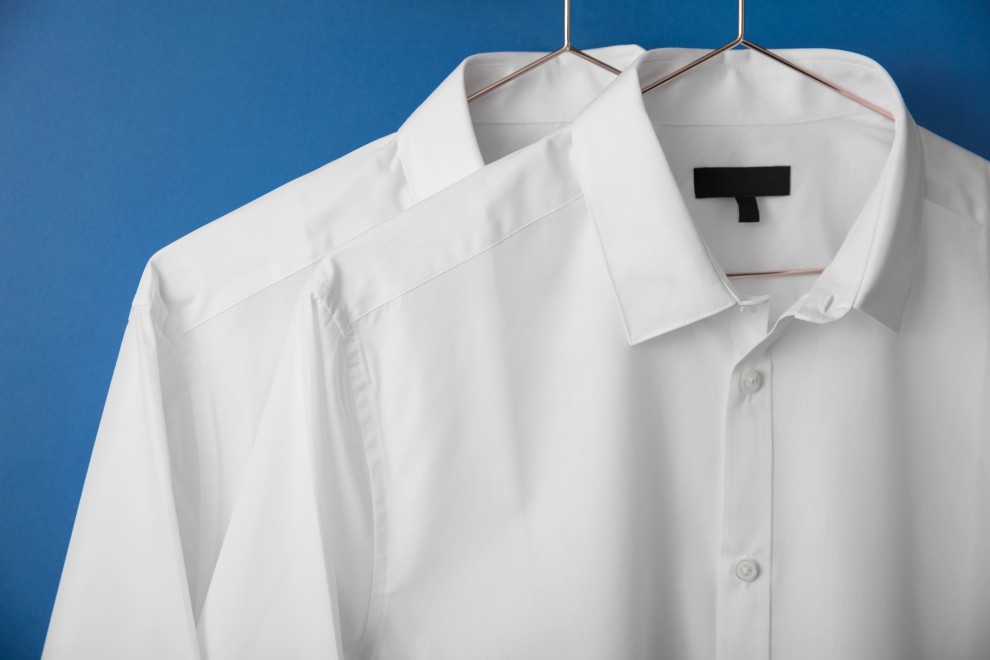
THE DRESSING OF SAYYIDINA RASULULLAH SALLALLAHU ‘ALAYHI WASALLAM
The author has mentioned sixteen ahaadith in this chapter. The ‘ulama say the dressing of a person is either waajib, mustahab, haraam, makruh or mubaah (permissible). A person should, when dressing, diligently follow the mandub (preferred) mode, and abstain from the makruh mode of dressing.
It is waajib to dress in a manner where the satr is covered at all times. The mandub manner is that which the shari’ah has preferred and induced us to wear, like the wearing of one’s best clothing on the two ‘Eids, and the wearing of white on Fridays.
Makruh isthat clothing which the shari’ah has discouraged us from wearing. For example, a rich person should not always wear torn and tattered clothes. Haraam clothing is that which the shari’ah has prohibited us from wearing.
For example, (it is haraam) for a man to wear silken clothing without a valid shar’ee reason.
Hadith Number 1 and 2
Ummul Mu-mineen, Ummi Salamah Radiyallahu ‘anha relates: “Of all the clothing, Rasulullah
Sallallahu ‘Alayhi Wasallam preferred wearing the qamis (Thowb, kurtaa) the most”.
Commentary
The ‘ulama have written different reasons for Sayidina Rasulullah Sallallahu ‘Alayhi Wasallam preferring to wear a qamis (Thowb, kurtah). Some say it is because it covers the body well andcovers it better than a lungi etc.
Some say because it is ‘qumait’ and besides it is less of a burden on the body, whereas a sheet has to be straightened every now and then. Some are of the opinion that it does not create pride in a person, as other clothing does.
According to this humble servant the reason is because it covers the satr well, and the same time it is neat, whereas in some clothing there is less beauty, like the lungi, or it does not cover the satr well, like the top sheet.
The eighth hadith in this chapter seems contrary to this hadith. lt shall be compared and reconciled there.
Hadith Number 3
It has been reported from Ummi Salamah Radhiyallahu ‘Anha: “Rasulullah Sallallahu ‘Alayhi Wasallam preferred wearing, from among all clothing, the qamis (thowb)”.
Commentary
Mulla ‘Ali Qaari relates from Dimyaati that the qamis of Sayidina Rasulullah Sallallahu ‘Alayhi Wasallam was made of cotton and was not very long, nor were the sleeves long. Bayjuri has written that Sayidina Rasulullah Sallallahu ‘Alayhi Wasallam had only one qamis.
It is reported from Sayyiditina ‘Aayeshah Radhiyallahu ‘Anha that: “Rasulullah Sallallahu ‘Alayhi Wasallam did not leave any of the morning food for the evening, nor any of the evening food for the morning. He possessed only one each, of a lungi, qamis, sheet ( body wrap), shoes or any other clothing. He did not have a pair of any of these”.
Munaawi relates from Sayyidina Ibn ‘Abbaas Radiyallahu ‘anhu that, ‘The qamis (thowb, kurtah) of Sayyidina Rasulullah Sallallahu ‘Alayhi Wasallam was not very long, nor were its sleeves long.
In another hadith of Sayyidina Ibn ‘Abbaas Radiyalia anhu it is stated that the qamis of
Sayyidina Rasulullah Sallallahu ‘Alayhi Wasallam was above the ankles. ‘Allaamah Shaami says:’It should reach halfway down the calf’.
Hadith Number 4
Asmaa bint Yazeed Radhiyallahu ‘Anha says: “The sleeve of Rasulullah Sallallahu ‘Alayhi Wasallam’s qamis reached to the wrists”.
Commentary
This narration apparently contradicts the one where it has been stated that the sleeves of the qamis of Sayyidina Rasulullah Sallallahu ‘Alayhi Wasallam were a bit longer than the wrist.
The’ulama have summed up the difference in several ways. Firstly, that at different times it had different lengths. Secondly, that when the sleeves were creased they were above the wrists, and when they were smooth and straight they were over the wrists. Some are of the opinion that both are taken on estimation. In this case there is no difficulty.
Maulana Khalil Ahmad Saahib has written in the ‘Badhlul Majhud’ that where it is mentioned till the wrists, it is taken to be the best and desirable. Where the sleeves are stated to be longer, it is considered permissible.
‘Allaamah Jazari states that it is sunnah that the length of the qamis (kurtah) sleeves reach till the wrists, and that of a jubbah be a bit longer, but in no case should it be longer than the fingers.
Hadith Number 5

Qurrah bin Ilyaas Radiyallahu’Anhu relates: “I came with a group from the tribe of Muzeenah to make bay’ah (pay allegiance) to Rasulullah Sallallahu ‘Alayhi Wasallam.
The button loop of Rasulullah Sallallahu ‘Alayhi Wasallam’s qamis was open. I put my hand in the collar of Rasulullah Sallallahu ‘Alayhi Wasallam’s qamis to touch the Seal of Prophethood (to gain barakah)”.
Commentary
When he visited Sayyidina Rasulullah Sallallahu ‘Alayhi Wasallam he found the collar of
Sayyidina Rasulullah Sallallahu ‘Alayhi Wasallam’s qamis open. It is characteristic of one who
loves, that every act of his beloved sinks into his heart.
Sayyidina ‘Urwah Radiyallahu’Anhu, who is a narrator of this says: “I have never seen Mu’aawiyah (bin Qurrah – Radiyallahu’Anhu) and his son button up their collars. Be it summer or winter, their collars were always open”.
Their love for Sayyidina Rasulullah Sallallahu ‘Alayhi Wasallam has given us a glimpse of each and every act and deed of the beloved Rasul of Allah, Sallallahu ‘Alayhi Wasallam.
Hadith Number 6
Anas bin Maalik Radhiyallahu ‘Anhu reports: “Rasulullah Sallallahu ‘Alayhi Wasallam came out of his house with the assistance of Usaamah bin Zayd. At that time he was wrapped in a Yamaani printed sheet. Rasulullah Sallallahu ‘Alayhi Wasallam came and led the Sahaabah in prayer”.
Commentary
‘Daar Qutni’ has stated that this incident took place when Sayyidina Rasulullah Sallallahu ‘Alayhi Wasallam was ill. For this reason he was assisted by Sayyidina Usaamah bin Zayd Radhiyallahu Anhu. It is possible that it was the time of Sayyidina Rasulullah Sallallahu ‘Alayhi Wasallam’s illness before his death.
This hadith will also be mentioned in the chapter on ‘Sayyidina Rasulullah Sallallahu ‘Alayhi Wasallam leaning on something’. Imaam Tirmidhi has written a surprising incident on the sanad (chain of narrators) of this hadith, from which we can gauge the intense love of the muhadditheen for the hadith, and their detachment from this unstable and materialistic world. Muhammad bin AI-Fadl says:
“Yahya bin Mu’een (who is a great imaam and scholar of hadith -some ‘ulama have said that he has written ten lakh -100,000- ahaadith with his own hands) asked me as soon as I sat down (when visiting him), about this hadith. I started reciting it to him.
He said: ‘I desire you to read it out from your kitaab so that it may be more satisfying”‘ Muhammad bin AI-Fadl says: ‘I stood up to go inside and fetch the kitaab. He caught me by my qamis and said: “First dictate it to me from memory, so that I may write it down.
There is no surety of life and death. It is possible I may meet you or Imay not meet you again.
You may repeat it from the kitaab later’. Muhammad bin AI-Fadl says: ‘I recited it to him from memory, then brought the kitaab and read it out again from the kitaab’. Allahu Akbar! He did not have that little assurance that either of them would live till he went inside to get a kitaab and return.
His love for the hadith was such that he did not even like to wait till the kitaab was brought from inside the room.
Hadith Number 7
Abu Sa’eed Khudari (R.A) says, “When Rasulullah (S.A.W) put on a new garment, he would in happiness mention that garment’s name. For example, ‘Allah Ta’aala gave me this qamis (thowb, kurtah), ‘amaamah (turban) sheet, etc” Then recited this du’aa:
‘Allahumma lakal hamdu kama kasauw- tanihi, as-aluka khayrahu wa-khayra ma-suni’a lahu wa-a’u- dhu bika min sharrihi wa-sharri ma-suni’a lahu’.
Translation
“Oh Allah, all praise and thanks to You for clothing me with this (garment). I ask You for the good of it and the good of what it was made for, and I ask Your protection from the evil of it and the evil of what it was made for.”
COMMENTARY
The goodness and badness of a garment is evident and ‘for the good and bad for which it was made’ means for summer and winter, elegance etc. For whatever reason it is worn, the goodness in it is that it may be used to obtain Allah’s pleasure, like performing ‘ibaadah (devotion) with it. To use it for a bad cause would be in disobeying Allah or to create pride, arrogance etc.
Hadith Number 8
Anas bin Maalik (R.A) says: “The sheet (body wrap) most liked by Rasulullah (Sallallahu alaihe wasallam) was the Yamaani printed sheet.”
COMMENTARY
This seems to contradict the hadith mentioned at the beginning of the chapter where it is stated that Sayyidina Rasulullah (Sallalahu alaihe wasallam) preferred wearing the qamis (kurtah) the most.
The ‘Ulama have given many explanations for this. The simplest explanation if that there is no difference. He liked the qamis very much and the sheet too. It could also be said that among ordinary clothing that are worn, he liked the qamis the most, and from the ones that are used for outer covering, he liked the sheet the most.
It has also been stated that for purposes of evidence this is a much stronger hadith.Some ‘Ulama have taken the first hadith for the different types of clothing, among which Sayyidina Rasulullah (S.A.W) liked the qamis most, and this hadith for the coloured clothing, from which he liked the coloured printed sheet the most.
Some say the sheet was of a green colour. The object is that, among the colours, green was liked the most, as it is the colour of the clothing in Jannah (paradise).
HADITH NUMNBER 9
Abu Juhayfah (R.A) says, “I saw Rasulullah (S.A.W) wearing a pair of red (coloured) clothing. The lustre of the feet of Rasulullah (S.A.W) is still before me.” Sufyan (R.A) who is a narrator of this hadith says: “According to my understanding the pair (of clothing) was printed red.”
COMMENTARY
This incident took place at the time of Hajjatul-Widaa, as is stated if the Bukhaari and other
kitaabs of hadith. Sayyidina Sufyaan (R.A) ‘ Anhu’s reason for saying that this was a red
coloured clothing (for men).
There is a difference of opinion among the ‘Ulama’. The Hanafis also state a number of opinions. This has been discussed in the first chapter. Before choosing red-coloured clothing an ‘aalim should be consulted.
Maulana Gangohi has mentioned a few times in his fataawa (religious rulings) that it is permissible for a man to wear red patterned garment’s. From the point of taqwaa (piety) it is better for a man not to wear red coloured garments, since there is a differince of opinion among the learned ‘Ulama’.
HADITH NUMBER 10
Baraa bin ‘Aazib (R.A) says: “I have never seen anybody more handsome in red clothing than Rasulullah (S.A.W). At that time, the hair of Rasulullah (S.A.W) reached his shoulders.
COMMENTARY
This hadith has been mentioned in the first chapter. It is repeated here because of the red coloured clothing.
HADITH NUMBER (11)
Abu Rimthah Taymi (R.A) says,“I saw Rasulullah (S.A.W) covering himself in two green coloured sheets.”
COMMENTARY
This hadith has been quoted twice. It is repeated here briefly.
HADITH NUMBER 12
Qaylah bin Makhramah (R.A) says: “I saw Rasulullah (S.A.W) in such a state that he was wearing two old lungis (sarong, waist wrap) that had been dyed a saffron colour but there was no sign of saffron left on it.” There is a lengthy story in this hadith also.
COMMENTARY
It is prohibited in the hadith to use clothing dyed with saffron. For this reason it has been pointed out in the above hadith that the colour of the saffron had faded, so that there remains no contradictions in the ahaadith. Sayyidina Rasulullah (S.A.W) wore the two old sheets as a sign of humility.
The sufis have for It should also be borne in mind that if (the wearing of such clothing) does not have this effect then this manner is not preferred.
It will cause more harm than good as we see it happening in these times. Many a time this way is adopted to show that one has reached the stage of perfection whilst the tongue is asking (begging).
An incident of Abul-Hasan Shaa-dhali who is from among the great sufis is famous. Once he
was wearing smart clothing. Some raggedly dressed person objected. He replied, “My dressing in this manner shows praise and gratefulness to Allah, whereas this state of yours shows a state of asking (begging). You in your present state are begging from people.”
In short, it is better not to wear showy clothing but only with the intention of humbleness, and on condition that it does not lead one towards some other harm.
On the other hand, if it is worn for some religious benefits or to please a confidant who has given it as a present, then in this case to wear elegant clothing will also be mandub (desirable) and better. Sayyidina Rasulullah (S.A.W) once purchased a set of clothing in exchange for twenty seven camels and wore that clothing for this reason.
The mashaa-ikh of the Naqshabandiyyah and Shaa-dhaliyyah Orders usually wear elegant type of clothing. It has been given preference because it saves one from the appearance of a beggar.
Imaam Abul-Hasan Shaa-dhali has said: “It is important that one should keep away from the deceit of the heart from both angles. The gaining of fame by dressing shabbily, to show off by being humble, and to show pride by wearing smart elegant clothing, all are dangerous to our spiritual upliftment.
There is lengthy story in this hadith that is not relevant to the dressing of Sayyidina Rasulullah (S.A.W). Therefore Imaam Tirmidhi omitted it here with the object of shortening the hadith.
The story probably covers two sheets. The commentators have also omitted it for the same reason. In it are mentioned incidents for the early period and experiences of Sayyiditina Qaylah (R.A) after her acceptance of Islaam.
In a few narrations it is also mentioned that Sayyidina Ralsulullah (S.A.W) was sitting with his old clothing in a humble manner. He had a branch (fan) of a palm in his mubaarak hands.
A person entered his noble assembly. He saw Sayyidina Rasulullah (S.A.W) in this state of humbleness and due to the awe-inspiring appearance of Sayyidina Rasulullah (S.A.W), began shivering. Upon seeing this person in this state, or being made aware of it, Sayyidina Rasulullah (S.A.W) said to him:
“Keep calm.” As soon as Sayyidina Rasulullah (S.A.W) said this he became calm, and all the signs of fear vanished. In some ahaadith we gather that this incident relates to Sayyiditina Qaylah (R.A.) herself. Imaam Tirmikhi has therefore mentioned this briefly in the chapter on the sitting of Sayyidina Rasulullah (S.A.W).
The incident is attributed to Sayyiditina Qaylah (R.A) and will be mentioned in the chapter on the sitting of Sayyidina Rasulullah (S.A.W).
HADITH NUMBER 13

Ibn ‘Abbaas (R.A) says that Rasulullah (S.A.W) used to say: ” Choose white clothing, as it is the
best clothing. White clothing should be worn whilst living, and the dead should be buried in white.”
COMMENTARY
In this hadith it is not stated that Sayyidina (S.A.W) wore white clothing. Its mention in the
‘Shamaa-il Tirmikhi’ is therefore implicit. It can be explained that when Sayyidina Rasulullah
(S.A.W) encouraged the wearing of white clothing, then he must have worn it himself. If is
clearly stated in the Bukhaari that Sayyidina Rasulullah (S.A.W) wore white clothing.
HADITH NUMBER 14
Samurah bun Jundub (R.A) says: ” Rasulullah (S.A.W) said, “Wear white clothing because it is more taahir (paak) and clean, and also clothe your dead in it.”
COMMENTARY
By ‘It is more taahir (paak) and clean is meant that if a small stain appears, it will show clearly, whereas in coloured clothing it does not show easily.
HADITH NUMBER 15
Ummul Mu-mineen, ‘Aayeshah (R.A) reports: “Rasulullah (S.A.W) once left the house in the morning, wearing a sheet made of black hair.”
HADITH NUMBER 16
Mughirah bin Shu’bah (R.A) says: “Rasulullah (S.A.W) wore a rumi Jubbah which had narrow sleeves.”
COMMENTARY
This incident was at the time of Ghazwah Tabuk. The ‘Ulama have interpreted from this hadith that a thing made by non-believers is not najis (na-paak) till we can outwardly find of this. Up to that time there were no Muslims in Rome, and Sayyidina Rasulullah (S.A.W) wore the clothing made by them.
for prophets stories visit https://sunofislam.com/prophetsofgod/
for scientific miracles articles visit www.sunofislam.com
